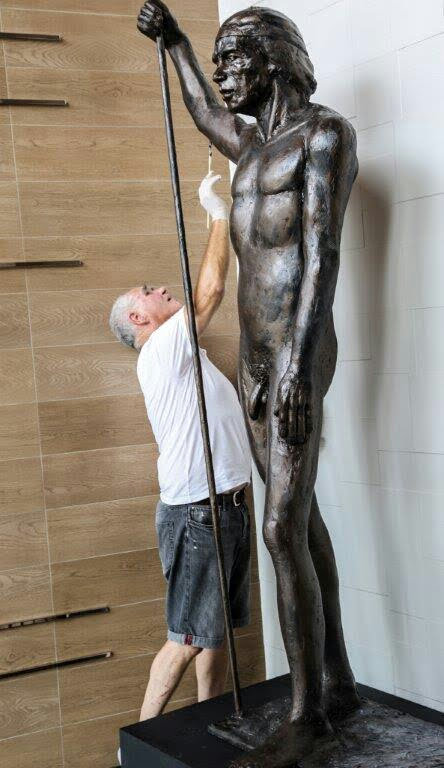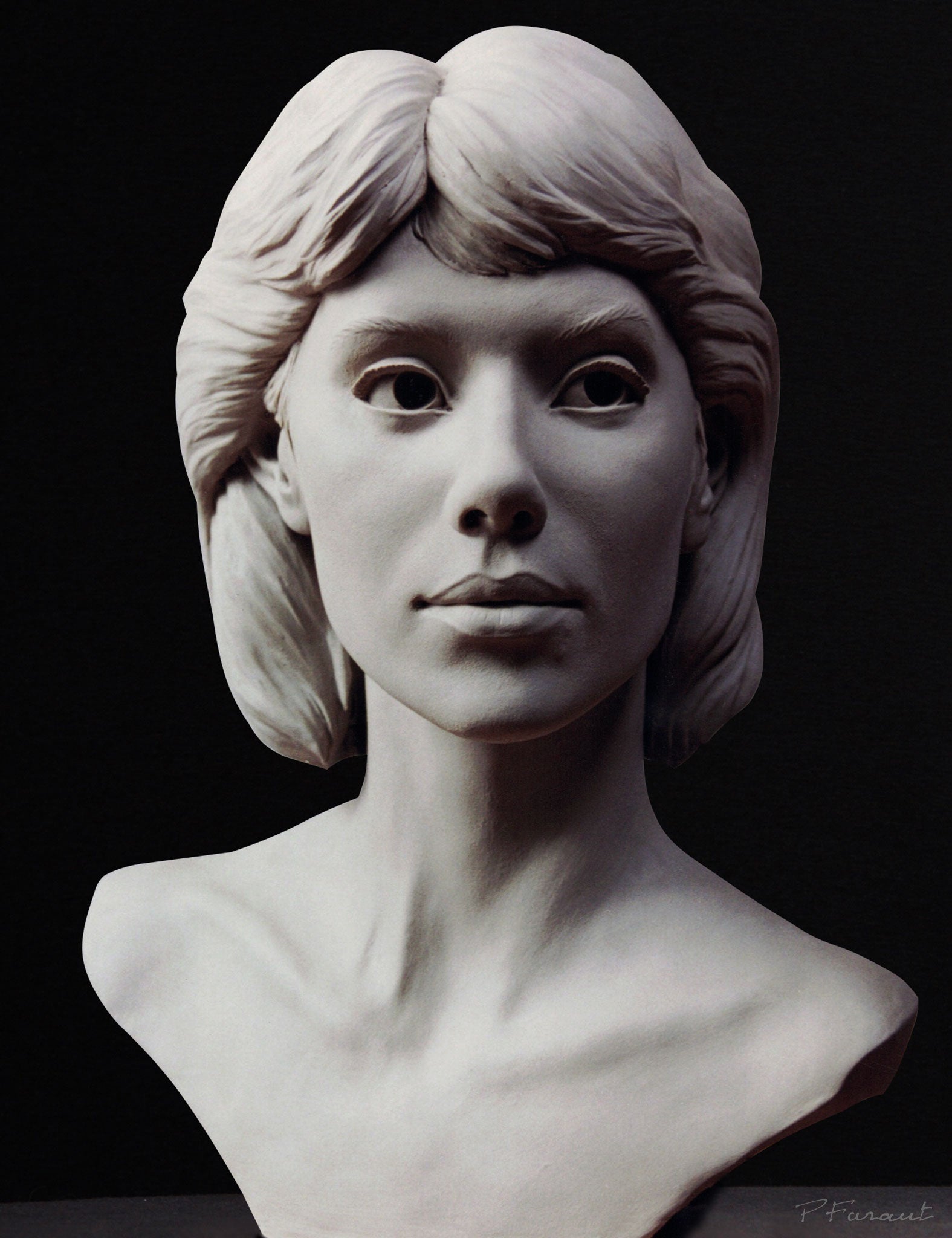Portrait Sculptor: Capturing Essence in Three Dimensions
Wiki Article
Sculptures as an Expression of Human Feelings
Sculptures have long been revered as an effective medium for expressing the depths and intricacies of human emotions. From the calm appeal of a grinning face to the raw strength of a bent figure, sculptures offer a distinct and ageless home window right into the world of human emotions. In this expedition, we will certainly dig right into the profound influence that sculptures have in expressing and stimulating human feelings.The Power of Catching Happiness and Happiness
The intrinsic power of sculptures hinges on their capacity to record and share the profound emotions of pleasure and joy with the skilled manipulation of form and product. Sculptures have actually been utilized throughout history as a method of revealing human feelings, and pleasure and joy are amongst one of the most typical feelings illustrated in these art kinds.One of the methods sculptures capture delight and happiness is with the cautious option and control of type. Artists make use of different techniques to produce sculptures that evoke a sense of joy, such as showing numbers in dynamic and uplifting postures, or using moving lines and curves to develop a feeling of activity and energy.
Additionally, the skilled use of faces and motions in sculptures can effectively communicate happiness and joy. Musicians meticulously sculpt the smiles, giggling, and expressions of joy on the faces of their topics, bringing them to life and catching the significance of these emotions. The positioning of the body and the gestures represented by the sculpture can additionally connect a sense of happiness and happiness, whether it is a number with outstretched arms, dance, or accepting others.
Exploring the Depths of Unhappiness and Grief
An expedition right into the midsts of unhappiness and sorrow can be attained via the evocative sculptures that record the significance of these extensive feelings. These sculptures work as a visual depiction of the human experience, allowing audiences to get in touch with their own feelings of sadness and sorrow on a much deeper degree.Via the competent control of type, expression, and structure, carvers can communicate the complex feelings connected with unhappiness and grief. The usage of lengthened, hunched figures or contorted, uneasy expressions can elicit a sense of despair and pain. The option of materials, such as chilly, rough stone or dark, weather-beaten steel, can better improve the sad and melancholic mood of the sculptures.
Moreover, the power of these sculptures hinges on their capacity to go beyond language barriers - Contemporary Sculptures. Regardless of linguistic or social differences, the universal language of art allows individuals from varied backgrounds to empathize and connect with the feelings depicted in these sculptures. Equine Sculptures. It is via this shared experience that a sense of catharsis and understanding can be achieved
Unveiling the Complexity of Love and Desire
Revealing the intricacies of love and hoping, sculptures use an extensive exploration into the intricacy of love and wish. Via the usage of different products and methods, artists have had the ability to capture the essence of these effective emotions and share them in tangible forms. Love, with its many measurements and subtleties, is a topic that has actually astounded artists throughout history. From the tender accept of a pair to the enthusiastic important link complexity of bodies, sculptures have shown the diverse expressions of love and desire.One such instance is Auguste Rodin's renowned sculpture, "The Kiss." This work of art portrays 2 enthusiasts secured an intimate welcome, their bodies knit momentarily of intense interest. The sculpture not only captures the physical connection in between the fans but additionally stimulates a much deeper emotional bond. The elaborate details and the experienced workmanship highlight the intricacy of their love and desire.
Sculptures also discover the darker side of love and wish, unveiling the intricacies that can arise from these intense emotions. Contemporary Sculptures. Some sculptures show the torment and anguish that can go along with unrequited love or the devastating power of compulsive wish. These artworks act as a tip that love and desire can be both lovely and challenging, bringing joy and discomfort in equivalent procedure
Conveying Anger and Frustration Through Sculptures
With the portrayal of bent forms and stressful positions, sculptures share the intensity of anger and disappointment. Musicians have actually long transformed to the medium of sculpture to share these effective feelings, using numerous methods to catch the raw energy and chaos connected with rage and aggravation.
One usual method is to show figures in hostile or confrontational positions. The muscle tension and clenched hands of a sculpture can evoke a sense of bottled-up rage, while twisted limbs and contorted facial expressions can convey the aggravation felt by the topic. These physical indications of emotion work as a visual representation of the inner chaos experienced by people in minutes of anger and irritation.
Furthermore, musicians commonly use significance and metaphor to boost the emotional impact of their sculptures. For instance, sharp, rugged edges or broken forms can signify the damaging nature of temper, while hefty, troublesome structures can stand for the weight of irritation. By including these elements into their work, musicians are able to interact the strength and intricacy of these feelings in a tangible and visually striking way.

Revealing Hope and Resilience in Sculptural Kind
Sculptures personifying hope and durability are a testament to the indomitable spirit of the human experience. These art work act as effective icons of positive outlook and stamina in the face of hardship. Via the competent adjustment of materials, musicians have the ability to capture the essence of hope and resilience, producing sculptures that influence and boost.
One instance of a sculpture that symbolizes hope is "The Winged Victory of Samothrace." This ancient Greek statuary illustrates a winged goddess standing atop a ship's prow, her garments billowing in the wind. The sculpture radiates a sense of accomplishment and resolution, signifying the power of want to conquer challenges.

Sculptures that reveal hope and durability function as pointers of the human ability to withstand and grow despite difficulty. They inspire us to persist, to find toughness in ourselves, and to believe a brighter future. These artworks talk to the global human experience, using relief and inspiration to those that encounter them.
Final Thought
Finally, sculptures serve as an effective medium for revealing a large range of human feelings (Robert C Hitchcock Sculptor). With their imaginative kind, they record the essence of delight, sadness, hope, love, and rage. Portrait Sculptor. By eliminating personal pronouns, the focus stays on the global nature of these feelings and the capability of sculptures to communicate them in a substantial and long-lasting manner. This highlights the significance of sculptures as a way of sharing and understanding the intricacies of the human experience.Sculptures have long been admired as a powerful tool for expressing the depths and intricacies of human feelings. From the tranquil appeal of a grinning face to the raw strength of a contorted number, sculptures supply a ageless and distinct window into the world of human emotions. In this exploration, we will certainly dive into the profound impact that sculptures have in revealing and evoking human feelings.
In final thought, sculptures offer as an effective medium for sharing a large array of human feelings (Portrait Sculptor). By getting rid of personal pronouns, the emphasis remains on the universal nature of these feelings and the ability of sculptures to share them in a enduring and tangible manner
Report this wiki page